Wildlife Wednesday: Screech Owls – Predators in Your Backyard
Wh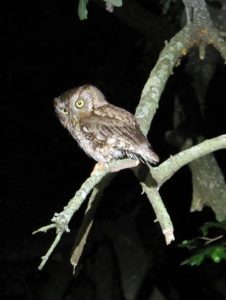 en we lead people through the park at night, the star of the show is usually the diminutive and active Eastern Screech Owl. Many visitors are enraptured, and tell us that it’s the first time they’ve seen an owl in the wild. In fact, most people don’t even know that we had owls here in Bellaire… that they had owls right in their own backyards.
en we lead people through the park at night, the star of the show is usually the diminutive and active Eastern Screech Owl. Many visitors are enraptured, and tell us that it’s the first time they’ve seen an owl in the wild. In fact, most people don’t even know that we had owls here in Bellaire… that they had owls right in their own backyards.
I felt the same way, when I was starting my career as a naturalist. I didn’t realize that owls were living their lives, nesting, hunting, and raising their young right in the midst of where I was living and working. In fact, Screech Owls are very common urban/suburban owls, making a living wherever trees and small prey are available.
The Eastern Screech Owl is the smallest owl species you’ll see in the Houston area, and the most common. As you’d expect with owls, they’re nocturnal and predatory. These owls feed on a wide variety of small prey; such as lizards, snakes, small birds, and large insects (including large flying cockroaches). Much of this small prey is surprisingly abundant in urban areas, and so are Screech Owls.
They nest in tree cavities; usually abandoned woodpecker nests or holes formed from broken branches. Screech owls also take well to nest boxes, placed in trees by helpful humans. They’re territorial birds, establishing a zone around their nests from which they’ll attempt to exclude other screech owls. The mothers stay in the nest during the day, while the father finds a secluded roost in a tree nearby. At night, both parents hunt for prey to feed the chicks. In some parts of the screech owl’s range, the parents may add a live blind snake to the nest, to help control ants and other small insects.
Here in our 4 acre park, we usually get 3 breeding pairs. They begin nesting as early as January, and may care of their young as late as the Summer, though the young usually fledge from the nest around May.
We more often hear Screech Owls, than we see them. Though we may think of owls hooting, many species of owl don’t hoot at all. Screech Owls make long soft trills, ghostly whinnies, and piercing screeches. Once I learned their calls, I realized that I had heard them calling from the trees near my apartment for years. And that’s the way it is with a lot of urban wildlife… We may encounter them in one way or another all the time, but may be totally unaware of sharing our environment with them.
If you want to encounter screech owls, you can go out at night in your neighborhood and listen for them. Perhaps you’ll even see one sitting on a tree branch, looking for prey. Have a look at these YouTube Videos, with common Eastern Screech Owl calls:
You can also join us here at the Nature Discovery Center for a guided night hike, looking for owls and other nocturnal animals in the park: a Family Night Hike on May 4th and an Adult Night Hike on May 19th.
For more info about Screech Owls or our programs and hikes, give us a call at 713-667-6550.
Eric Duran
Staff Naturalist
Nature Discovery Center
Photographs by Don Verser and Eric Duran


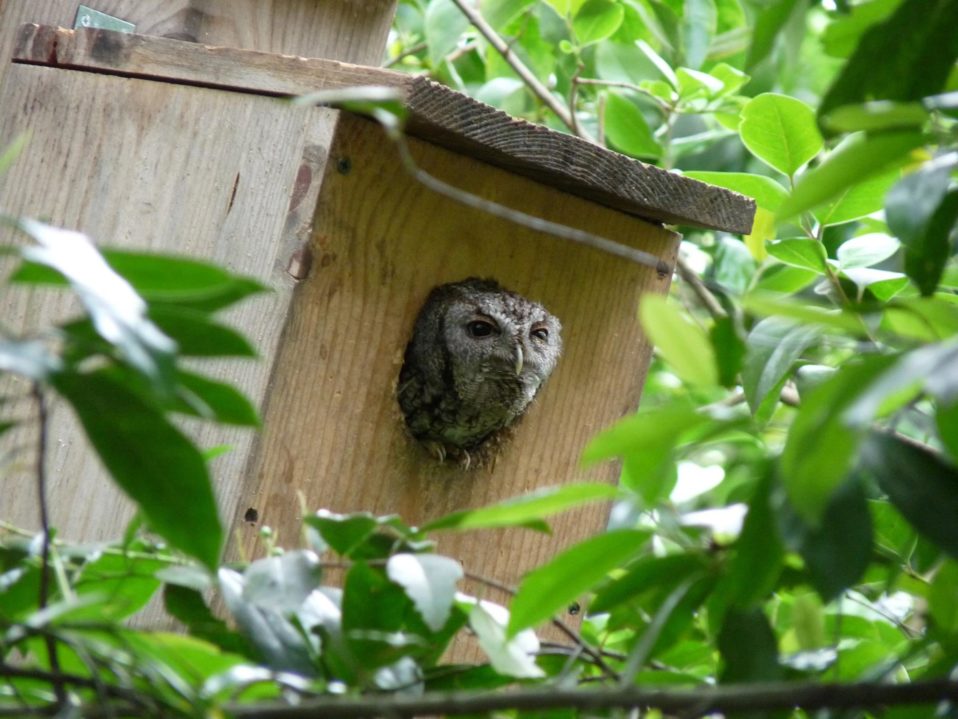

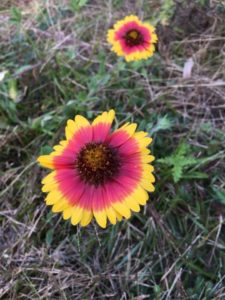 Gaillardia pulchella) aka Firewheel is a colorful relative of daisies and sunflowers. Popular with bees and butterflies, these showy flowers bloom from late February through December. The long blooming period of this annual, hardiness, and wide appeal to a variety of pollinators make it perfect for home gardens. They only grow 1 – 2 ft tall.
Gaillardia pulchella) aka Firewheel is a colorful relative of daisies and sunflowers. Popular with bees and butterflies, these showy flowers bloom from late February through December. The long blooming period of this annual, hardiness, and wide appeal to a variety of pollinators make it perfect for home gardens. They only grow 1 – 2 ft tall.
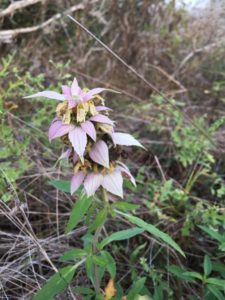 (Monarda punctata) are both very popular with large bees and butterflies, and they are gorgeous complex flowers. Beebalms grow from April – July. They’re in the mint family, and have a history of medicinal use. They are perennials, coming back from root stock the next season.
(Monarda punctata) are both very popular with large bees and butterflies, and they are gorgeous complex flowers. Beebalms grow from April – July. They’re in the mint family, and have a history of medicinal use. They are perennials, coming back from root stock the next season.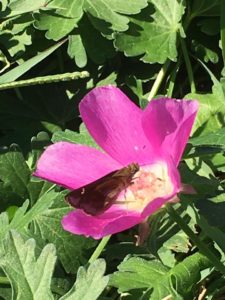
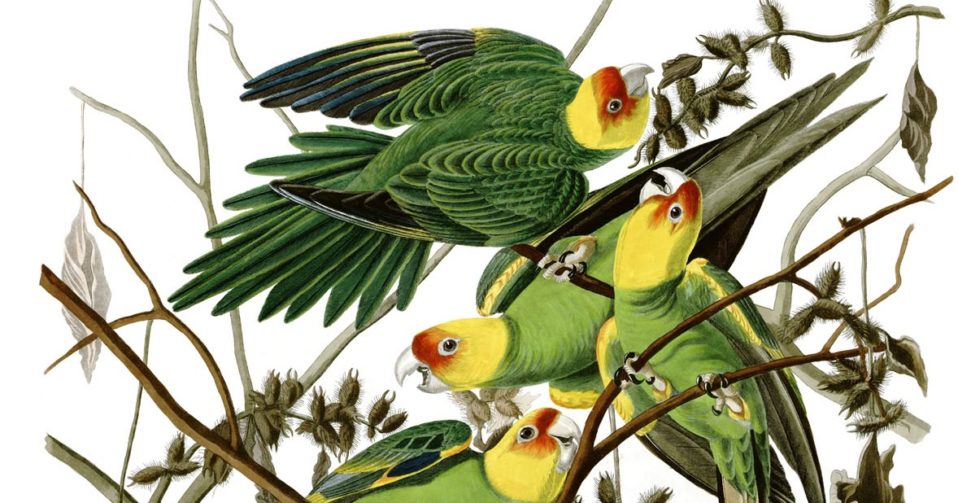
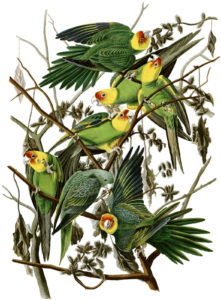 At one time, believe it or not, we had a common and colorful parrot, found across the central and Eastern United States, ranging from Southern New England, west to Colorado, and south to Texas along the Gulf Coast to the tip of Florida. The Carolina Parakeet (Conuropsis carolinensis) could be found in temperate and sub-tropical areas of the country, and was the Northernmost parrot in the Americas. They ate mostly large seeds and small fruits. Its thought that their habit of eating poisonous cocklebur seeds may have made the birds themselves poisonous, protecting them from predators. These parakeets were gregarious, living in groups of 200-300 birds. They nested in old hollow trees, using species such as Sycamore and Bald Cypress, in old growth forests, along the edges of wetlands.
At one time, believe it or not, we had a common and colorful parrot, found across the central and Eastern United States, ranging from Southern New England, west to Colorado, and south to Texas along the Gulf Coast to the tip of Florida. The Carolina Parakeet (Conuropsis carolinensis) could be found in temperate and sub-tropical areas of the country, and was the Northernmost parrot in the Americas. They ate mostly large seeds and small fruits. Its thought that their habit of eating poisonous cocklebur seeds may have made the birds themselves poisonous, protecting them from predators. These parakeets were gregarious, living in groups of 200-300 birds. They nested in old hollow trees, using species such as Sycamore and Bald Cypress, in old growth forests, along the edges of wetlands. 

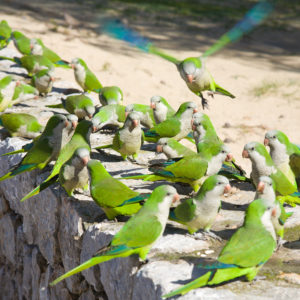
 Besides Monk Parakeets, and the occasional escaped Budgie, released Red-masked parakeets live in San Francisco, and various species of Amazon parrots live in South Texas and Southern Florida. Red-crowned parrots and Green Parakeets nest in the most Southern parts of the Rio Grande Valley of Texas, though its not clear if they are released pets, or whether Mexican populations have begun to creep slowly into the U.S.
Besides Monk Parakeets, and the occasional escaped Budgie, released Red-masked parakeets live in San Francisco, and various species of Amazon parrots live in South Texas and Southern Florida. Red-crowned parrots and Green Parakeets nest in the most Southern parts of the Rio Grande Valley of Texas, though its not clear if they are released pets, or whether Mexican populations have begun to creep slowly into the U.S.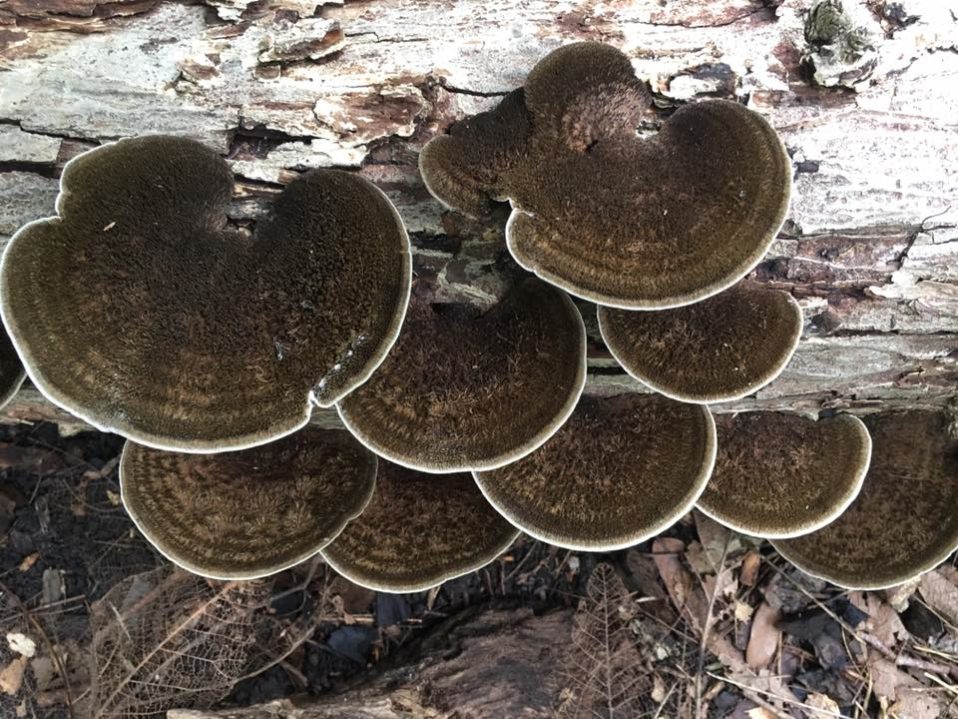
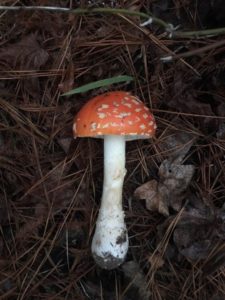 The bright red Fly Agaric (Amanita muscaria) is perhaps the most iconic of mushrooms. Ask a lot of people to draw a mushroom, and this is the species that may come to mind, though not everyone may know the name. This mushroom is famously hallucinogenic, but can also be somewhat toxic (so I would avoid consuming it). The name comes from the old practice of using this mushroom to ward off flies. Fly agarics are symbiotic with pine trees, and have a wide range across the Northern Hemisphere. One of the varieties that grows in our Texas pine forests may be a pale yellow.
The bright red Fly Agaric (Amanita muscaria) is perhaps the most iconic of mushrooms. Ask a lot of people to draw a mushroom, and this is the species that may come to mind, though not everyone may know the name. This mushroom is famously hallucinogenic, but can also be somewhat toxic (so I would avoid consuming it). The name comes from the old practice of using this mushroom to ward off flies. Fly agarics are symbiotic with pine trees, and have a wide range across the Northern Hemisphere. One of the varieties that grows in our Texas pine forests may be a pale yellow.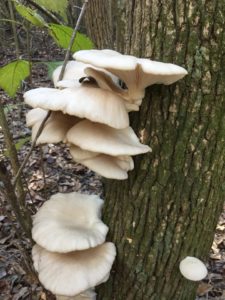
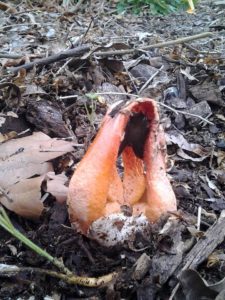 A rather strange looking mushroom that may pop up in your yard is the Columnar Stinkhorn (Linderia columnatus). They usually grow from soil with a lot of dead organic matter or hardwood mulch, so they’re usually seen in flower and landscaping beds. Besides the distinctive white egg like structure from which they seem to emerge, the spongy orange squid like tentacles, joined at the top, are rather unique. When the mushroom forms its slimy dark green spore mass inside the columnar arms, it takes on a nasty odor, reminiscent of feces and rotting carcass. The various species of stinkhorn fungi (ie. Columnar, Lattice, and stinky squid) attract flies with these odors to spread their spores to new locations.
A rather strange looking mushroom that may pop up in your yard is the Columnar Stinkhorn (Linderia columnatus). They usually grow from soil with a lot of dead organic matter or hardwood mulch, so they’re usually seen in flower and landscaping beds. Besides the distinctive white egg like structure from which they seem to emerge, the spongy orange squid like tentacles, joined at the top, are rather unique. When the mushroom forms its slimy dark green spore mass inside the columnar arms, it takes on a nasty odor, reminiscent of feces and rotting carcass. The various species of stinkhorn fungi (ie. Columnar, Lattice, and stinky squid) attract flies with these odors to spread their spores to new locations.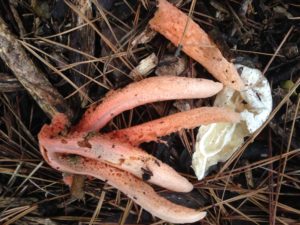
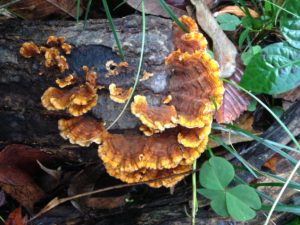
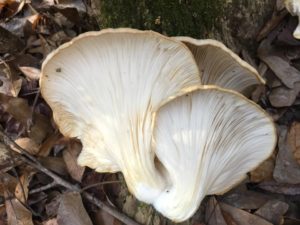
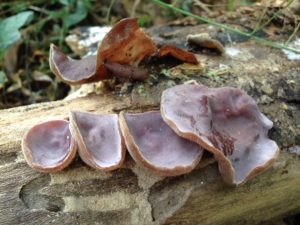

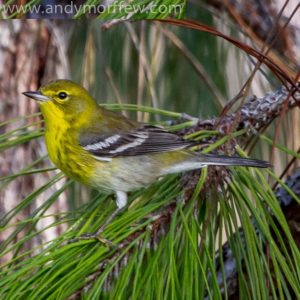
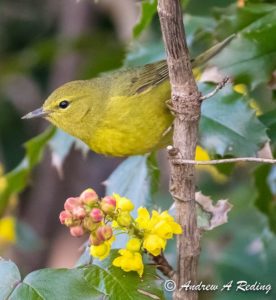
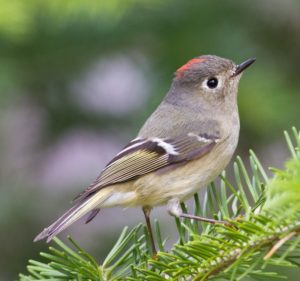
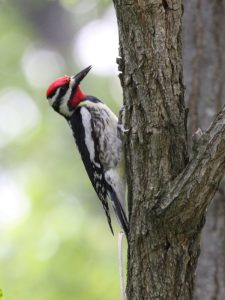
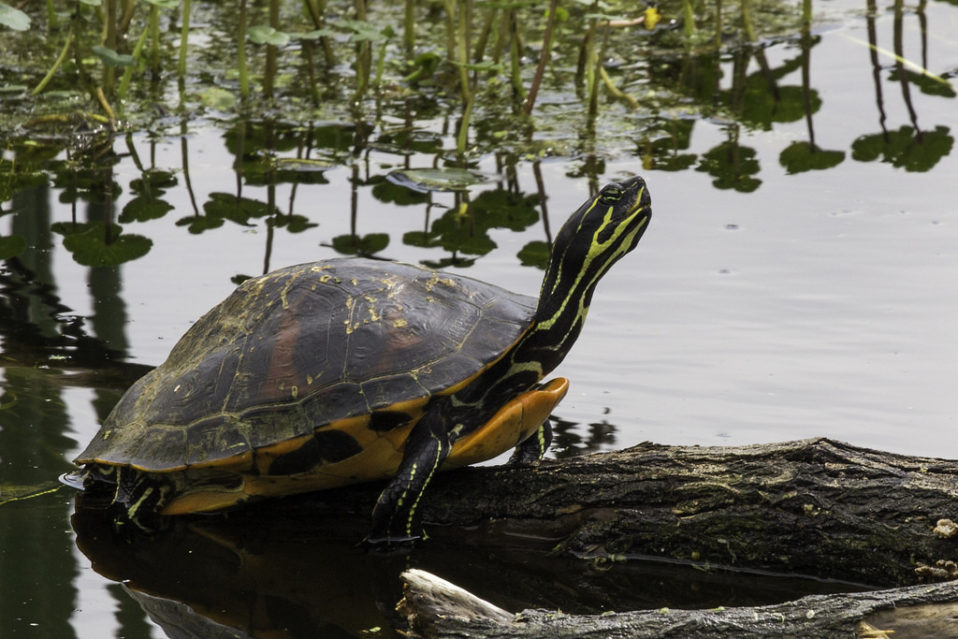
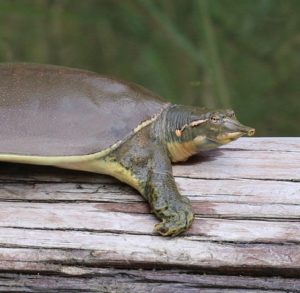
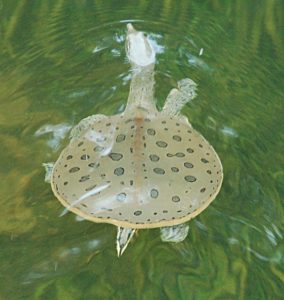

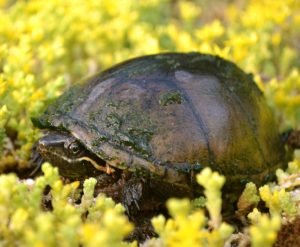
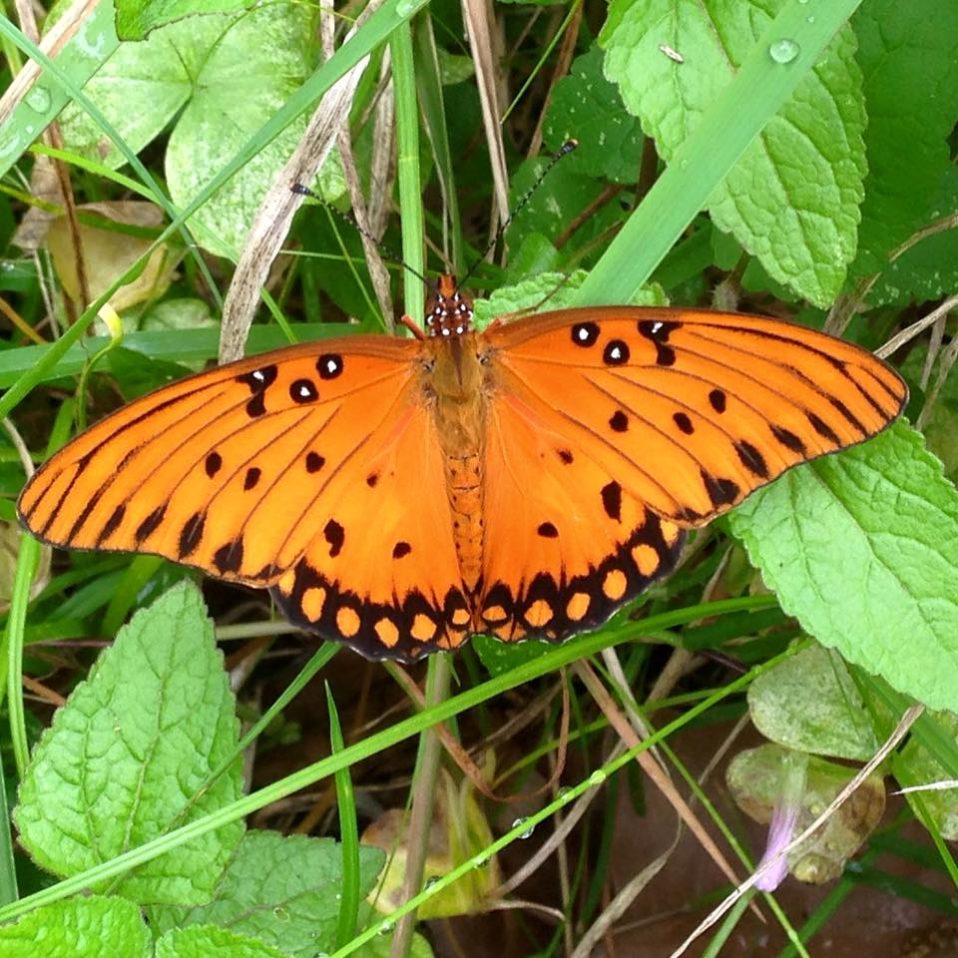
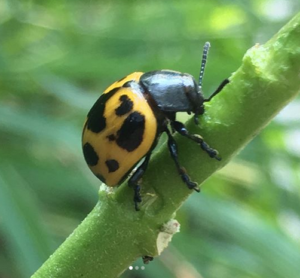 Most people who grow Mexican Milkweed in their gardens expect Monarch Butterflies, and even the tiny yellow milkweed aphids, on their milkweed plants, but we were surprised to notice, a couple of years ago, that our herb garden milkweed had also attracted bright yellow and black Milkweed Leaf Beetles (Labidomera clivicollis). Like monarch caterpillars, these round conspicuous beetles feed on the poisonous leaves of the milkweed, and are therefore toxic to predators, as well. The
Most people who grow Mexican Milkweed in their gardens expect Monarch Butterflies, and even the tiny yellow milkweed aphids, on their milkweed plants, but we were surprised to notice, a couple of years ago, that our herb garden milkweed had also attracted bright yellow and black Milkweed Leaf Beetles (Labidomera clivicollis). Like monarch caterpillars, these round conspicuous beetles feed on the poisonous leaves of the milkweed, and are therefore toxic to predators, as well. The  beetles come on black and yellow, black and red, and black and orange.
beetles come on black and yellow, black and red, and black and orange.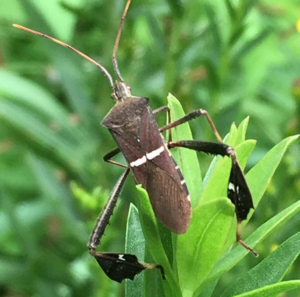 stern Leaf-footed Bugs (Leptoglossus phyllopus) are one of 3 common leaf-footed bugs that are found in our park throughout the year. We’ve seen the adults, and the red wingless nymphs prowling around plants in the garden. They feed on plants by piercing them with a straw-like proboscis and sucking juices out of the plant. The inject chemicals into the plants to aid in feeding, and these secretions may be somewhat toxic to the plant. In small amounts, this isn’t harmful, but in large numbers may kill the plant.They are harmless to people, but they may release a foul smelling substance when bothered.
stern Leaf-footed Bugs (Leptoglossus phyllopus) are one of 3 common leaf-footed bugs that are found in our park throughout the year. We’ve seen the adults, and the red wingless nymphs prowling around plants in the garden. They feed on plants by piercing them with a straw-like proboscis and sucking juices out of the plant. The inject chemicals into the plants to aid in feeding, and these secretions may be somewhat toxic to the plant. In small amounts, this isn’t harmful, but in large numbers may kill the plant.They are harmless to people, but they may release a foul smelling substance when bothered.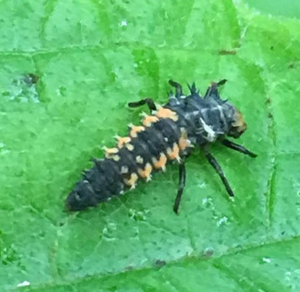
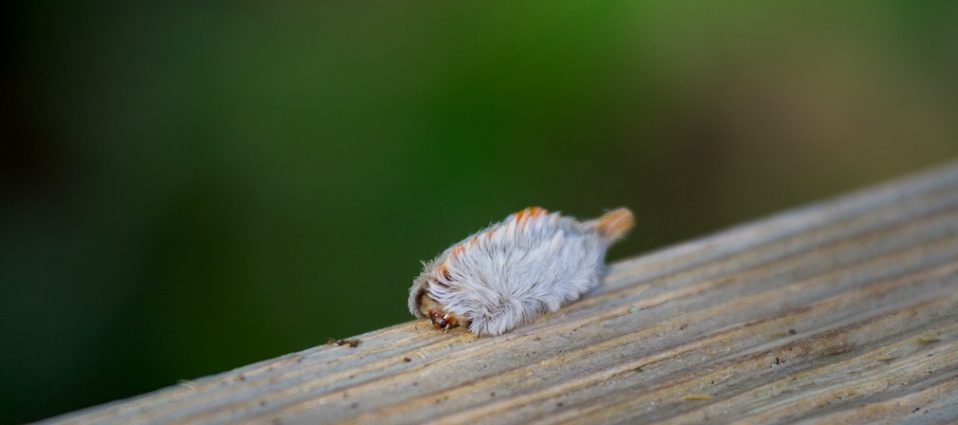
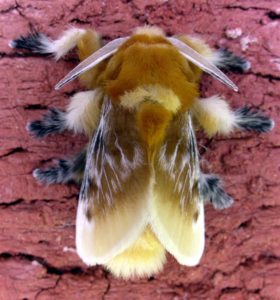
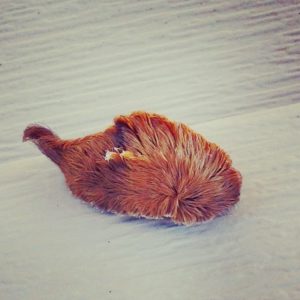 The most infamous of our stinging caterpillars is the Asp or the caterpillar of the Southern Flannel Moth (Megalopyge opercularis, pictured right). Asps usually emerge from their eggs in mid to late Autumn, and are commonly found in or near hardwood trees, shrubs, and vines. They feed on the leaves of these plants, and wander around constantly, looking for food, and eventually for decent locations to make their cocoons. They may be various shades of brown and gray, with a fur ridge down the middle of the back.
The most infamous of our stinging caterpillars is the Asp or the caterpillar of the Southern Flannel Moth (Megalopyge opercularis, pictured right). Asps usually emerge from their eggs in mid to late Autumn, and are commonly found in or near hardwood trees, shrubs, and vines. They feed on the leaves of these plants, and wander around constantly, looking for food, and eventually for decent locations to make their cocoons. They may be various shades of brown and gray, with a fur ridge down the middle of the back. 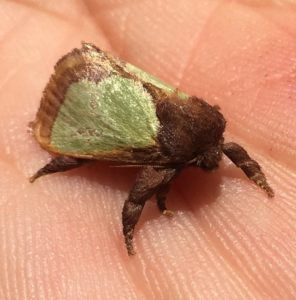
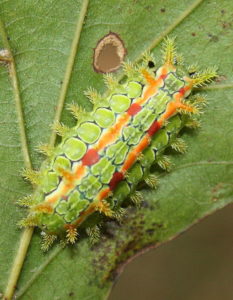 The Spiny Oak Slug (Euclea delphinii) is the caterpillar of an adorable furry little green and brown cup moth (pictured above right). While the caterpillar is really quite beautiful with its intricate designs of yellow and green or brown and orange, the pain from the stings is not at all adorable. These small spiny larvae (growing to only 2 cm long) feed on a wide variety of leaves from deciduous trees, bushes, and vines. In the South, they have 2 generations, one in the Summer, and another active in Fall.
The Spiny Oak Slug (Euclea delphinii) is the caterpillar of an adorable furry little green and brown cup moth (pictured above right). While the caterpillar is really quite beautiful with its intricate designs of yellow and green or brown and orange, the pain from the stings is not at all adorable. These small spiny larvae (growing to only 2 cm long) feed on a wide variety of leaves from deciduous trees, bushes, and vines. In the South, they have 2 generations, one in the Summer, and another active in Fall.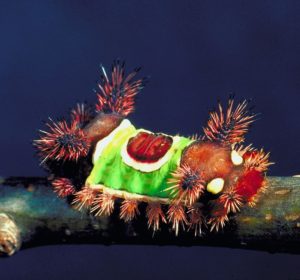
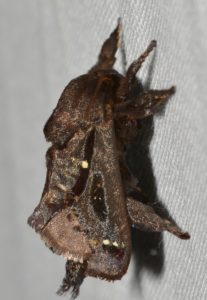 Well, we hope this little mini-guide to stinging Fall caterpillars helps you stay safe out in your yard, garden, and out in area parks in the coming weeks. Though painful at times, they are important herbivores in our native ecosystems, and they really can be quite beautiful and even endearing.
Well, we hope this little mini-guide to stinging Fall caterpillars helps you stay safe out in your yard, garden, and out in area parks in the coming weeks. Though painful at times, they are important herbivores in our native ecosystems, and they really can be quite beautiful and even endearing.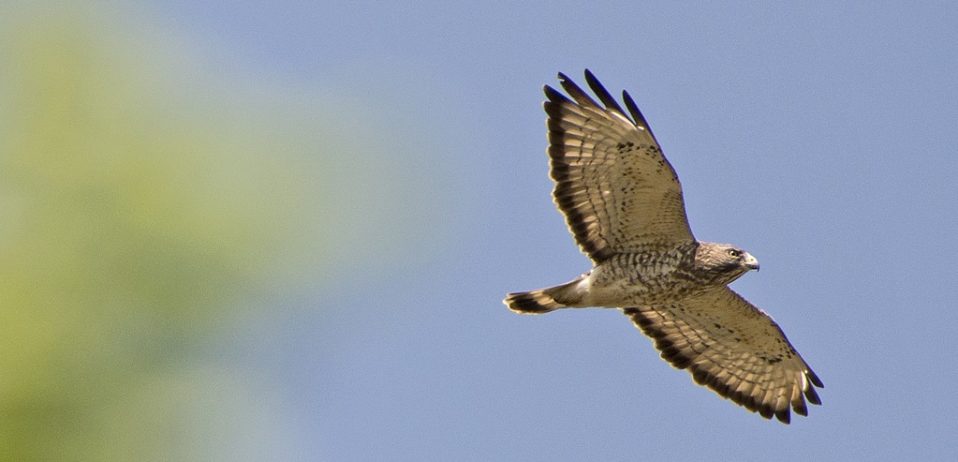
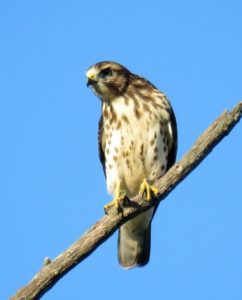
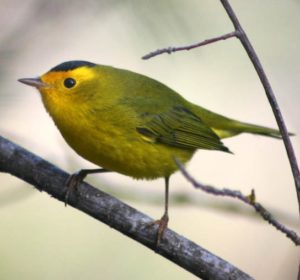
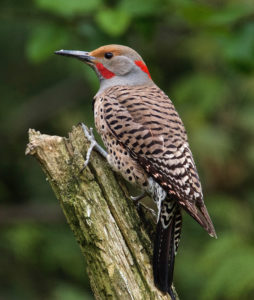
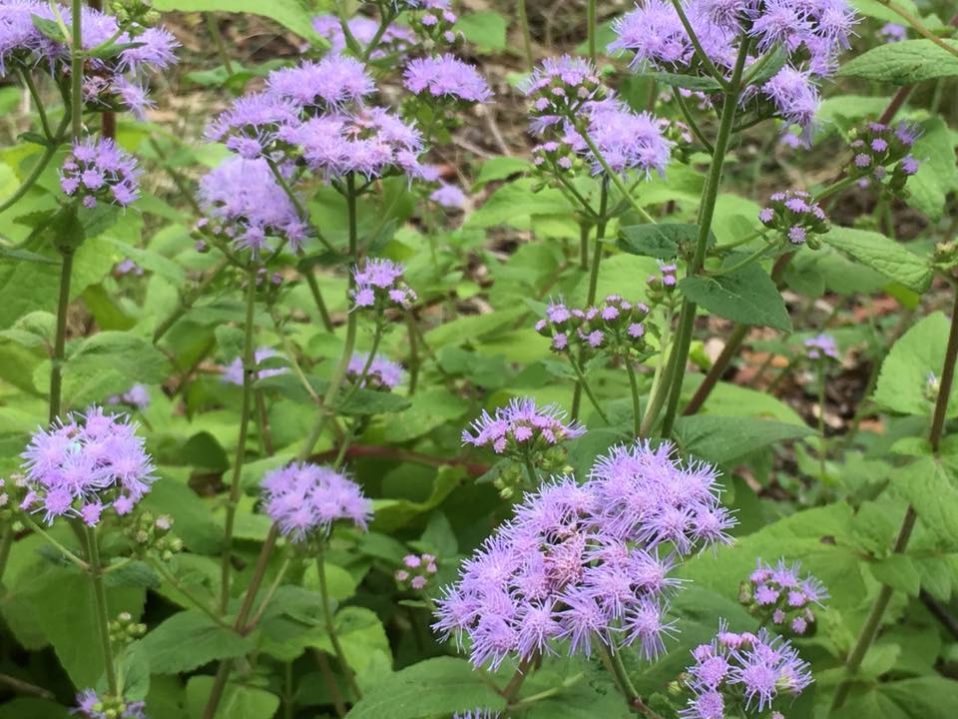
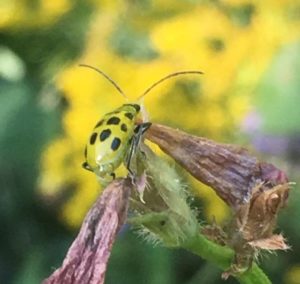 People don’t usually think of beetles as pollinators, but we’ve recently found Spotted Cucumber Beetles (
People don’t usually think of beetles as pollinators, but we’ve recently found Spotted Cucumber Beetles (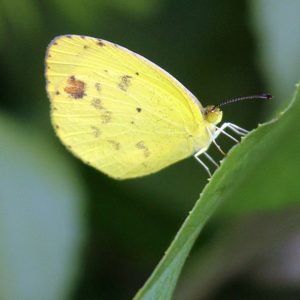
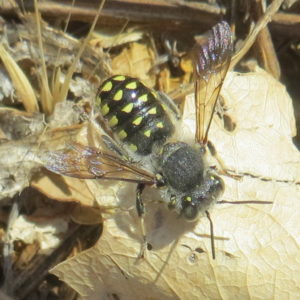 Wool Carder Bees (Anthidium maculosum) are solitary bees, and are just a bit shorter than honeybees, but thicker-bodied. Unlike honeybees, the males males are larger than the females and territorial, and they survive after mating. The females mate with various different males, and establish a nest to lay eggs and raise young by themselves. They are referred to as “carder bees”, because of their habit of gathering plant hairs and fibers to construct their nests.
Wool Carder Bees (Anthidium maculosum) are solitary bees, and are just a bit shorter than honeybees, but thicker-bodied. Unlike honeybees, the males males are larger than the females and territorial, and they survive after mating. The females mate with various different males, and establish a nest to lay eggs and raise young by themselves. They are referred to as “carder bees”, because of their habit of gathering plant hairs and fibers to construct their nests.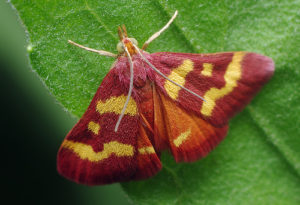
 Well, we hope you enjoyed our mini review of some of the insects that have been visiting our Mistflower, here at the Nature Discovery Center. Also, we hope you will consider this beautiful and robust plant for your own home garden, both as decoration and food for wild pollinators.
Well, we hope you enjoyed our mini review of some of the insects that have been visiting our Mistflower, here at the Nature Discovery Center. Also, we hope you will consider this beautiful and robust plant for your own home garden, both as decoration and food for wild pollinators.